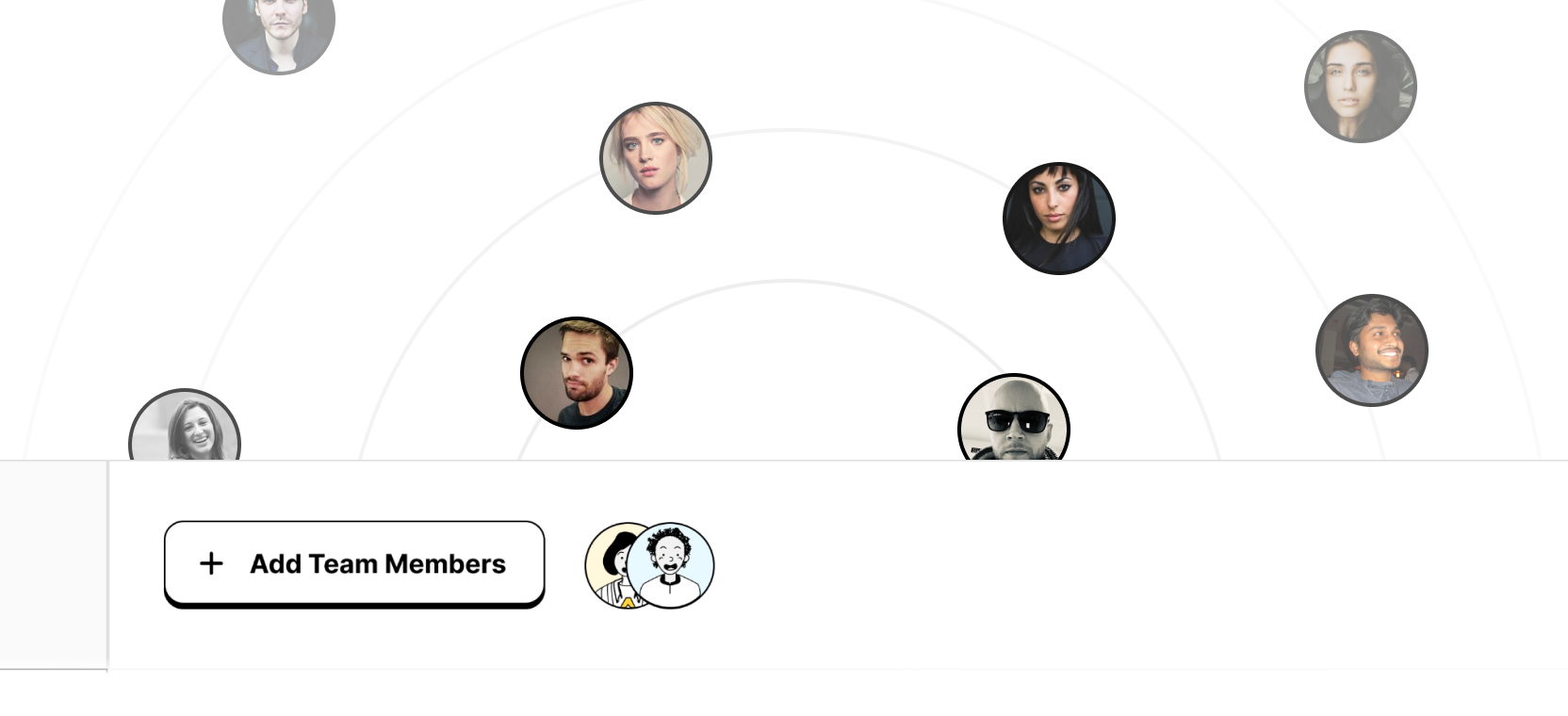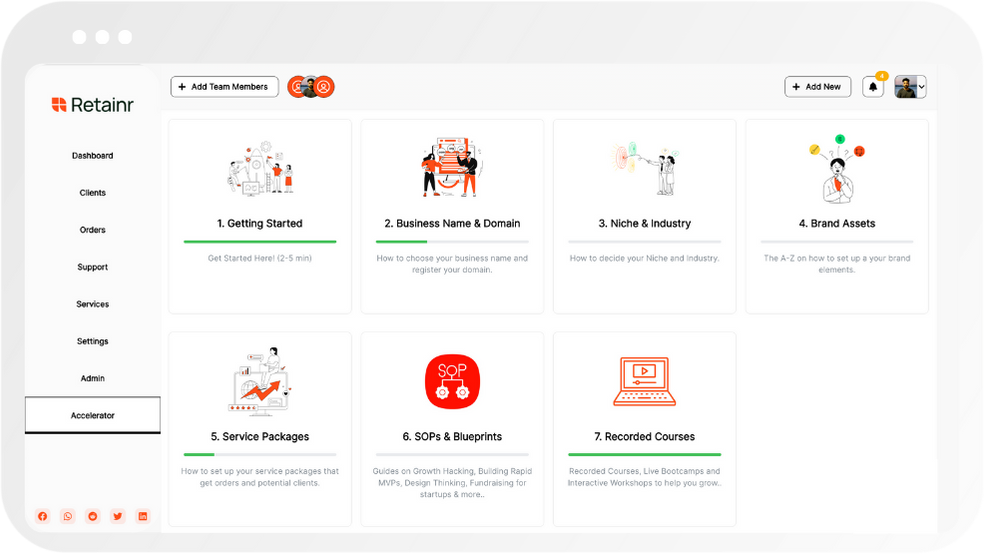
How to Use Keywords for YouTube SEO
Build with Retainr
Sell your products and services, manage clients, orders, payments, automate your client onboarding and management with your own branded web application.
Get Started1. What are keywords in YouTube SEO and why are they important?
What are Keywords in YouTube SEO?
Keywords are specific terms or phrases used in video titles, descriptions, and tags that accurately reflect the content of a YouTube video. These keywords play a significant role in YouTube's Search Engine Optimization (SEO) as they allow YouTube's algorithm to understand what your content is about. In addition, these keywords also help your videos to be discovered by users searching for content related to those specific terms.
Importance of Keywords in YouTube SEO
There are several reasons why keywords are particularly vital for YouTube SEO:
- Visibility: Correct use of keywords can help your videos appear in relevant user searches, increasing their visibility.
- Ranking: More views, likes, and engagements, which come from higher visibility, can enhance your channel ranking.
- Subscriber Growth: With increased visibility and ranking, you can attract more subscribers and grow your channel.
YouTube Keyword Usage
| Keyword Location | Importance |
|---|---|
| Video Title | Placing keywords in your video title can help YouTube's algorithm categorize your video accurately, thereby enhancing its discoverability. |
| Description | Keywords in your video description aid the algorithm to further understand the context of your video content. |
| Tags | Although not as influential as title and description, tags can still assist in improving your video's visibility when they align with search terms. |
2. How do I find the right keywords for my YouTube video?
Finding the Right Keywords
Finding the right keywords involves researching and understanding what your potential viewers might search for. This process consists of using data from various platforms and tools to discern popular search terms relevant to your content. Here are some steps on finding the right keywords for your YouTube video:
- Google Keyword Planner: This tool not only helps identify keywords but also provides information on search volume and competition levels for each keyword.
- YouTube's Search Suggest: Type in a keyword related to your video and YouTube will provide a dropdown of suggested keywords that reflect what users are commonly searching for.
- Use of Competitive Analysis: Look at the keywords your competitors are using in their videos and descriptions. This can help you gather more keyword options to consider.
- Social Media: Take note of the popular tags and keywords used in similar content across various social media platforms.
Key Factors to Consider When Choosing Keywords
Once you have a list of potential keywords, the next step is to select the most relevant and beneficial ones for your video. Here are the key factors to consider when choosing keywords:
| Factor | Description |
|---|---|
| Relevance | The keyword should be closely related to the content of your video. Irrelevant keywords can hurt your channel's reputation. |
| Search Volume | Opt for keywords with a high search volume. These are terms that users frequently search for. |
| Competition | Consider the competition level of each keyword. It might be harder to rank for high-competition keywords, especially for new or small channels. |
Implementing Keywords in Your Video
Once you've chosen your keywords, it's time to implement them in your video metadata. The title, tags, and description of your video should contain your keywords. But, remember to be mindful of keyword stuffing. Here are places you can integrate your keywords:
- Title: The title should contain your most important keyword. Make it engaging yet concise.
- Description: Naturally incorporate your keywords into your video’s description. This alerts YouTube and Google about your video’s content.
- Tags: Tags are another opportunity to include keywords. They help increase the visibility of your video.
3. Where should I place my keywords for optimal YouTube SEO?
Location of Keywords for Optimum YouTube SEO
For optimal YouTube SEO, it's important to place your keywords strategically in specific locations of your video's metadata. Firstly, the video title should include the primary keyword, preferably towards the beginning. It's also recommended to add relevant keywords in the video description. Initial 2-3 lines of the description matter the most, hence, ensure your keywords appear in this section. The tags section should also contain all your keywords.
- Title: Your primary keyword should feature here, preferably at the beginning.
- Description: Included keywords in the first 2-3 lines, and also maintain keyword density throughout.
- Tags: Keywords should be included in your list of tags. Include long tail keywords too.
You can also use keywords strategically in other non-textual components of the video. Like, incorporate keywords in the filename of the video. This boosts relevancy signals when YouTube algorithm scans the file metadata. Thumbnails should be optimized with keywords where applicable. Even captions and subtitles can contain the necessary keywords. However, avoid keyword stuffing as it may lead to penalties.
| Elements | Strategy |
|---|---|
| Filename | Include keywords when saving your video file. |
| Thumbnails | Where applicable, optimize with keywords. |
| Captions/Subtitles | Use keywords while ensuring natural, meaningful sentences. |
4. How many keywords should I use for each YouTube video?
Deciding the Number of Keywords for Each YouTube Video
The number of keywords that should be used for each YouTube video may vary depending on the length and topic of the video. However, the general rule of thumb is to focus on one primary keyword and three to five secondary keywords. The primary keyword would be the most relevant and specific to the video's content, whereas the secondary keywords would help to further illustrate the video's topic.
- Primary Keyword: This should be the most relevant keyword that directly defines the content of your video.
- Secondary Keywords: These are additional keywords that are related to the primary one and can help in reaching a broader audience.
Distributing Keywords in Your YouTube Video
Once you've chosen your keywords, it's crucial to position them correctly. The primary keyword should appear in the video title, the video description's first 25 words, and sprinkled throughout the remaining description where relevant. Secondary keywords can be used in the tags field as well as within the video description when applicable. Do ensure that the usage is organic and doesn’t seem forced or it could appear to be 'keyword stuffing' which can lead to negative SEO outcomes.
| Keyword Type | Title | Description | Tags |
|---|---|---|---|
| Primary Keyword | Yes | Yes (Primarily in the first 25 words) | No |
| Secondary Keywords | No | Yes | Yes |
Final Thoughts
Remember, it is not about stuffing your video details with as many keywords as you can. Instead, focus on using relevant and meaningful keywords that best represent your video content. Overusing keywords can negatively affect your YouTube SEO as it goes against YouTube's policies. Hence, keep your primary and secondary keywords limited to a number that is organically woven into the narrative.
5. What is the role of long-tail keywords in YouTube SEO?
The Importance of Long Tail Keywords in YouTube SEO
In the world of YouTube Search Engine Optimization (SEO), long-tail keywords play a pivotal role. To start with, these keywords, which are usually three to five words long, are more specific than generic, more commonly searched keywords. This specificity allows your content to break through the noise and reach the audience members who are most likely to engage with your offerings.
- Less competition: The more specific your keyword, the fewer contents will match the keyword exactly, making it easier to rank highly.
- Higher conversion: People who use long-tail keywords are often closer to the point of making a decision. Therefore, they're more likely to take the action the video prompts.
- Better for voice search: As voice search becomes increasingly popular, the use of long-tail keywords has become more essential. Voice queries are usually longer and more conversational, matching the structure of long-tail keywords.
Using Long-Tail Keywords Strategically in YouTube SEO
To make the most out of long-tail keywords, they need to be used strategically. One tactic is to include the long-tail keyword in the video title and description. This helps YouTube's algorithm understand what your video is about. Moreover, adding the long-tail keyword in the video's tags and using it as part of a compelling thumbnail description can work wonders as well.
| Placement of Long-tail Keywords | Impact on YouTube SEO |
|---|---|
| Video title | Directly impacts SEO as YouTube's algorithm prioritizes titles. |
| Video description | Helps algorithm to understand the context of the video. |
| Tags | Increases the chance of appearing in related video sections. |
| Thumbnail description | Affects user's decision to click on the video. |
Boosting Your YouTube SEO With Long-Tail Keywords
In conclusion, incorporating long-tail keywords strategically into your YouTube content not only optimizes your videos for search but also boosts user engagement. By focusing on this SEO technique, you can make your content more discoverable, increase views, and accelerate your channel's growth. Understanding the intent behind these keywords can give you an edge over your competitors and help you create more targeted, relevant content.
6. How do keyword trends affect YouTube SEO?
The Impact of Keyword Trends on YouTube SEO
Staying updated with the latest keyword trends plays a significant role in enhancing your YouTube SEO. This simply means that the popularity or search frequency of keywords fluctuates regularly depending on various factors such as trending topics, seasonality or current events. Understanding and acting on these trends can give your content a substantial boost in visibility and performance.
Following are the key benefits of following keyword trends:
- Increased visibility: Videos that utilize trending keywords typically appear more readily in YouTube search results and recommendations, increasing their impressions.
- Tap into new audiences: If a certain topic is trending and you create a video around that topic using the relevant trendy keywords, it exposes your content to a whole new segment of viewers who are currently interested in that trend.
- Competitive Edge: Staying ahead or keeping up-to-date with the latest trends and including them in your keyword strategy can provide benefit over competitors who may not be as responsive.
To illustrate the impact of keyword trends, let's consider a hypothetical comparison between two videos - Video A that has used static, non-trending keywords and Video B that has actively applied trending keywords.
| Video A (Non-trending Keywords) | Video B (Trending Keywords) | |
|---|---|---|
| Visibility | Low | High |
| Audience Reach | Limited | Expanded |
| Competitive Edge | Less | More |
7. How can I optimize my YouTube video titles and descriptions with keywords?
Optimizing YouTube Video Titles with Keywords
One of the most crucial areas to integrate keywords into your YouTube SEO strategy is in your video titles. The title informs both YouTube and the viewers what your content is about, thus enhancing its visibility. Here are a few tips to make the most out of your YouTube video titles:
- Include your main keyword: The closer it is to the beginning of the title, the better.
- Make it engaging: An enticing title grabs attention and increases clicks.
- Keep it short and accurate: Long, misleading titles may lead to viewer disatisfaction and may affect your ranking.
Optimizing YouTube Video Descriptions with Keywords
The descriptions of your YouTube videos provide more in-depth details about your content and are crawled by search engines to understand the content of your video. Here's how to effectively utilize them:
- Place essential keywords within the first 150 characters: Anything after 150 characters may not be displayed in the search results.
- Include a brief summary: This should give your audience an idea of what to expect in the video.
- Add links to your social media profiles or website: This can help in driving more traffic & expanding your online presence.
The Value of Keyword Optimization in Titles and Descriptions
| Video Element | Benefits of Keyword Optimization |
|---|---|
| Titles | Increased viewer clicks and higher rankings in YouTube's search results |
| Descriptions | Greater visibility in search results due to more crawling by search engines; increased traffic to other platforms |
8. Can using the right keywords improve my YouTube video ranking?
Impact of Right Keywords on YouTube Video Ranking
Yes, using the right keywords can significantly improve your YouTube video ranking. Correct usage of keywords aligns your content with what viewers are searching for and increases the likelihood of your videos appearing in search results. The higher your video appears in search results, the more visibility it gets, leading to increased views, likes, subscribers, and overall engagement. The algorithms of YouTube favor videos with high engagement and reward them with higher search rankings.
Best Practices for Keyword Usage
Here are some best practices for keyword usage:
- Perform keyword research to identify popular and relevant terms in your niche.
- Use your main keyword naturally in the video title, description, and tags.
- Include related keywords to cover variations of your main keyword.
- Optimize your video transcript or subtitles with keywords.
- Use long-tail keywords to target specific search queries.
Comparison of Video Ranking With and Without Keywords
| Parameters | Videos with Keywords | Videos without Keywords |
|---|---|---|
| Visibility in Search Results | High | Low |
| Viewer Engagement | More likely to have higher engagement | Less likely to have significant engagement |
| Ranking | Higher | Lower |
9. How do I use YouTube's keyword tool for SEO purposes?
Understanding YouTube Keyword Tool
YouTube's keyword tool, also called YouTube tags, is essentially designed to help you identify strategic keywords to target in your video descriptions and tags. Using this tool can help your videos rank higher on YouTube search results, making them more visible to potential viewers. Here's a step-by-step guide:
- Access your YouTube Studio Dashboard and select the video you want to optimize.
- Scroll down to the 'Tags' section and start typing keywords related to your video content.
- You may also use phrases as keywords in this section. Always ensure to use relevant keywords to avoid misleading the viewers and affecting your audience retention negatively.
Best Practices for Using YouTube Keywords
For maximum impact using YouTube keywords, there are a few best practices you should follow:
- Use long-tail keywords. These are more specific and have less competition.
- Include your target keyword in your video title, making it more relevant to the search algorithm.
- Utilize the 500-character limit for your tags.
- Don't spam keywords; instead, use them naturally within your video's title, description, and tags.
Keyword Ranking Impact
| Keyword Variable | Impact on Ranking |
|---|---|
| Relevance | Users should easily identify what your video is about based on your keywords. |
| Density | Repeat vital keywords, but avoid spamming. |
| Location | Using keywords in title, tags and description. |
10. What are some common mistakes to avoid when using keywords for YouTube SEO?
Common Mistakes to Avoid When Using Keywords for YouTube SEO
While optimizing your YouTube content with keywords can massively enhance your videos' visibility, some common mistakes often hinder performance. Here are three major blunders:
- Keyword Stuffing: Using an excessive amount of keywords in your video description or tags in an unnatural way, known as keyword stuffing, can harm your SEO. YouTube's algorithms are complex and can detect keyword stuffing, which can result in penalties and decreased rankings.
- Using irrelevant keywords: Some content creators make the mistake of using popular but irrelevant keywords to attract more views. This approach can lead to a high bounce rate as users click off your video when they realize it's not what they're looking for.
- Ignoring long-tail keywords: Focusing solely on generic, short keywords is another common mistake. Long-tail keywords, which are more specific and usually longer, often have less competition and can help reach a targeted audience.
The Impact of These Mistakes
The negative effects of these common mistakes can significantly impact your overall YouTube SEO performance. Let's take a detailed look at the possible ramifications:
| Common Mistake | Possible Ramification |
|---|---|
| Keyword Stuffing | Lower video ranking, loss of visibility, potential YouTube penalties |
| Using Irrelevant Keywords | High bounce rate, decreased viewer engagement and watch time, lower video ranking |
| Ignoring Long-Tail Keywords | Increased competition, difficulty reaching targeted audience, potential loss of valuable views |
Preventive Measures
To avoid these mistakes and optimize your YouTube SEO, follow these preventive measures:
- Strike a balance: Use keywords appropriately and naturally in your description and tags. Avoid excessive repetition.
- Stay relevant: Ensure your keywords are related to your video content. Misleading users by using irrelevant keywords can harm your performance.
- Include long-tail keywords: Incorporate long-tail keywords pertinent to your video content to attract a more targeted audience with clear intent.
Conclusion
The Role of Keywords in YouTube SEO
This blog post explores the effective use of keywords as a key strategy in enhancing YouTube SEO. SEO is crucial for the visibility and ranking of videos on YouTube. The strategic use of keywords can determine the success of a YouTube channel. However, this tactic requires an understanding of your audience and the ability to conduct thorough keyword research.
The Process of Keyword Research
The blog outlines various steps in performing keyword research for YouTube SEO including making use of keyword tools, understanding search intent, researching competitor keywords, and finally, implementing these keywords in your video content strategically.
Improve Your YouTube SEO with Retainr.io:
While understanding the process of keyword research can improve your Youtube SEO, managing all of these tasks can be overwhelming. This is why software like Retainr.io proves to be instrumental. Retainr.io is a versatile, white-label software solution that can help you to efficiently manage clients, orders and payments, all under your own brand. With a dedicated platform, you can effectively keep track of all SEO tasks, ensuring that your YouTube channel stands out among the competition and reaches your target audience successfully. Whether you are a solopreneur, a growing business, or an established corporation, Retainr.io is your reliable partner to accelerate growth. Visit www.retainr.io to learn more and take your YouTube SEO to the next level.
Boost Your Agency Growth
with Retainr Accelerator
Uncover secrets, strategies, and exclusive blueprints to take your agency's growth to the next level — from marketing insights to effective presentations and leveraging technology.

SOPs, Cheatsheets & Blueprints
Leverage 50+ SOPs (valued over $10K) offering practical guides, scripts, tools, hacks, templates, and cheat sheets to fast-track your startup's growth.
Connect with fellow entrepreneurs, share experiences, and get expert insights within our exclusive Facebook community.
.jpg)

Join a thriving community of growth hackers. Network, collaborate, and learn from like-minded entrepreneurs on a lifelong journey to success.

Gain expertise with recorded Courses, Live Bootcamps and interactive Workshops on topics like growth hacking, copywriting, no-code funnel building, performance marketing and more, taught by seasoned coaches & industry experts.

.jpg)

.jpeg)


